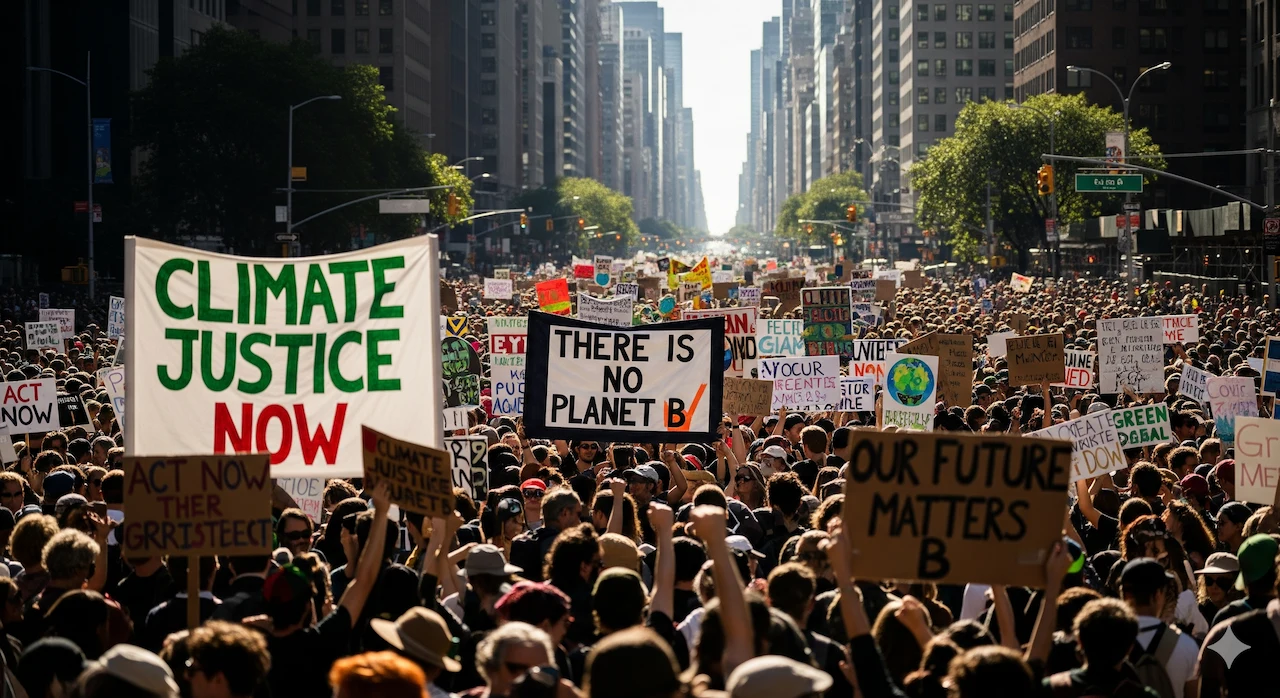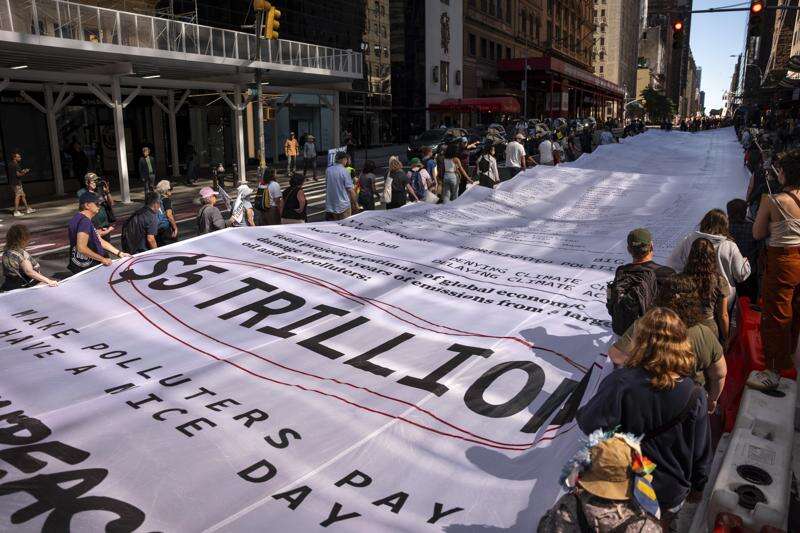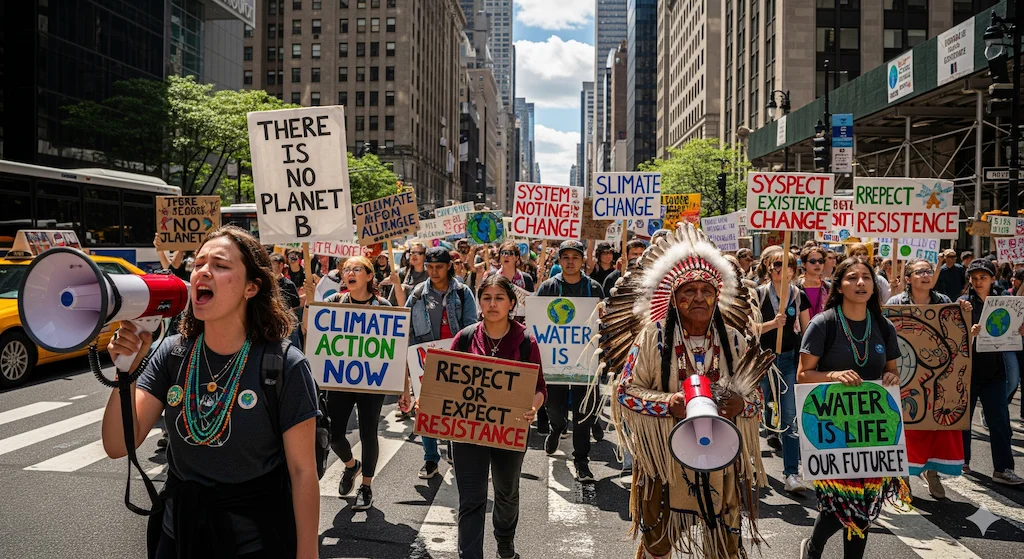GloNews10

As the world gears up for Climate Week NYC 2025, the streets of New York City have already become a battleground of voices demanding urgent action. In a massive show of strength, thousands of activists, students, environmental groups, and concerned citizens came together for climate protests in New York City, putting billionaires, corporations, and policymakers directly in the spotlight.
This wasn’t just another march. It was a bold call for climate justice, for holding the wealthiest and most powerful accountable, and for reminding leaders that the climate crisis is no longer a distant threat—it is here, now, and affecting millions across the globe.
New York City has historically been a hub for activism. From civil rights movements to Occupy Wall Street, the city’s streets have echoed with calls for justice. The climate protests in New York City just days before Climate Week NYC 2025 highlight a critical point: people are tired of empty promises.
Protesters argue that:

For many, this protest was not just about climate policies but about climate justice — ensuring that the transition to clean energy and sustainable economies is fair and equitable for all, not just profitable for a few.
Every year, Climate Week NYC attracts world leaders, CEOs, policymakers, and activists. It is one of the largest international climate events, running alongside the United Nations General Assembly.
The 2025 edition is expected to focus on:
But protesters believe that without real accountability, these discussions risk becoming another set of lofty speeches with little action. By organizing climate protests in New York City just before the summit, activists ensured that the public demand for climate justice couldn’t be ignored.
The demonstrations were peaceful yet powerful, filled with colorful banners, chants, and slogans. Among the key demands:
One of the strongest themes of the protests was targeting billionaires. Placards read: “Billionaires, Pay Your Share” and “Profit Can’t Buy a Planet”. Activists argue that while billionaires fund luxury lifestyles, private jets, and even space tourism, ordinary people face devastating floods, storms, and heatwaves.
By highlighting this disparity, protesters tied climate change directly to inequality, making climate justice not just an environmental issue but also a social one.

A youth activist from Brooklyn said:
“We don’t want another conference where leaders talk and then go home to business as usual. We need real action. We need climate justice now.”
An Indigenous leader added:
“Our lands are being destroyed, our waters polluted, and our communities displaced. Yet, we contribute the least to this crisis. This is not just a climate issue—it is about survival.”
Such statements show how deeply personal the issue of climate change has become.
Within hours, hashtags like #ClimateProtestsNYC, #ClimateWeekNYC, and #ClimateJustice were trending globally. Videos of massive crowds marching across New York streets flooded TikTok, Instagram, and X (formerly Twitter).
Social media played a crucial role in:
The protests caught the attention of international media. Several environmental NGOs and global leaders acknowledged the demonstrations. While some praised the spirit of the activists, others criticized the disruption.
Notably, climate experts emphasized that such protests are a necessary push to hold leaders accountable. Without grassroots pressure, they warned, climate conferences risk being dominated by corporate interests.
The phrase climate justice was echoed again and again during the protests. But what does it mean?
By framing climate change as a justice issue, protesters made it clear: this is not just about saving the planet—it’s about fairness, human rights, and survival.
As Climate Week NYC 2025 begins, all eyes are on how leaders and corporations will respond. Will they address the protesters’ demands? Or will they continue with business-as-usual announcements?
What’s clear is that the climate protests in New York City have already shaped the narrative. Leaders will now face tougher questions, sharper scrutiny, and louder calls for accountability.
The future of climate action depends on whether these voices are heard—or ignored.
The climate protests in New York City ahead of Climate Week NYC 2025 serve as a powerful reminder: people are no longer willing to wait for gradual change. The demand is clear—climate justice must be at the heart of every policy, investment, and global commitment.
From targeting billionaires to calling for systemic reforms, the protests show a growing frustration but also a growing movement. The streets of New York have spoken; now it’s up to the leaders in boardrooms and political halls to respond.
Because when it comes to the climate crisis, silence is no longer an option.